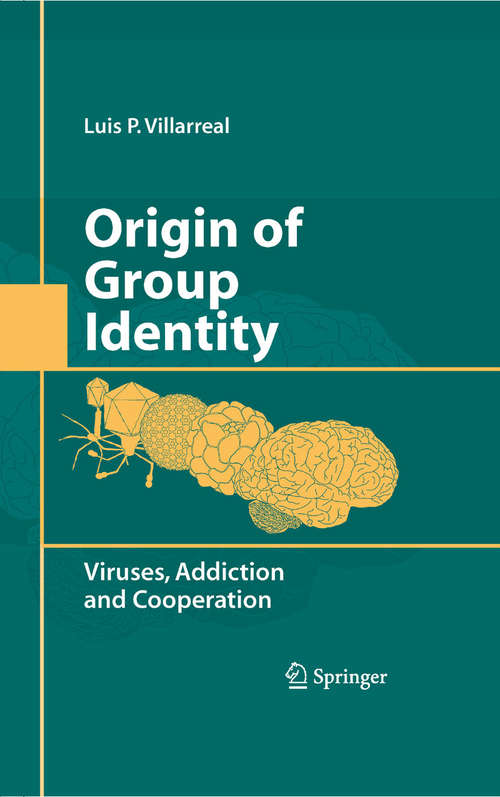Origin of Group Identity
By:
Sign Up Now!
Already a Member? Log In
You must be logged into Bookshare to access this title.
Learn about membership options,
or view our freely available titles.
- Synopsis
- The molecular evolution of viruses is fascinating and quite controversial, relevant to the evolution of living organisms, a determinant in pathogenesis by viruses, and amenable to detailed study in various laboratories around the globe. Evolution is the product of variation and selection. Genetic recombination is a major source of variation for evolutionary selection. Full understanding of virus evolution requires knowledge of the inventory of existing viruses, their distribution in biological space and time and their interactions with other viruses and living organisms. The basic focus of this volume will be to trace the evolution (or accumulation) of biological identity systems from molecules to microbes, through animals to primate and human social structure. Overall, the volume will be organized so that it will trace the evolution of group identification systems from simple unicellular life forms, through the 'tree of life' all the way to complex hominid social structures. Such an evolutionary tracing has not been previously published, thus the book will develop and present a unique organization of information. The focus of this book will also be to understand the mechanisms that allow group (social) identification and communication systems to function. Sensory identification systems, especially receptors, will be emphasized. In unicellular and early multicellular organisms, addiction modules (toxins and antitoxins, often from genetic parasites) are most commonly used as biological group identification systems. Later in evolution, odor receptors, in particular, provide a clear evolutionary trail that can be followed from microbes to humans. Photo and visual receptors are also considered along with the neurological systems that process receptor information. Visual and audio based social imprinting will also be presented. In addition, the book will seek to understand the underlying evolutionary forces that drive the creation of group identification systems. In particular, 'addiction' based molecular strategies will be examined. A unique element of this book will be to evaluate the role of genetic parasites in the origination of such addiction modules. The recent explosion of genomic databases and information will be called on heavily as evidence for this part of the book.
- Copyright:
- 2009
Book Details
- Book Quality:
- Publisher Quality
- ISBN-13:
- 9780387779980
- Related ISBNs:
- 9780387779973
- Publisher:
- Springer US
- Date of Addition:
- 05/01/13
- Copyrighted By:
- Springer US, Boston, MA
- Adult content:
- No
- Language:
- English
- Has Image Descriptions:
- No
- Categories:
- Nonfiction, Science, Medicine
- Submitted By:
- Bookshare Staff
- Usage Restrictions:
- This is a copyrighted book.
